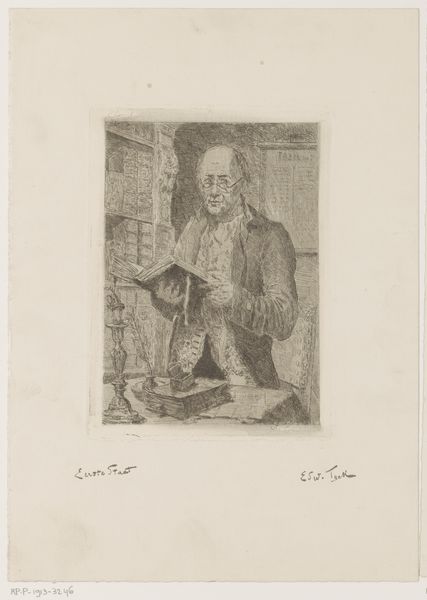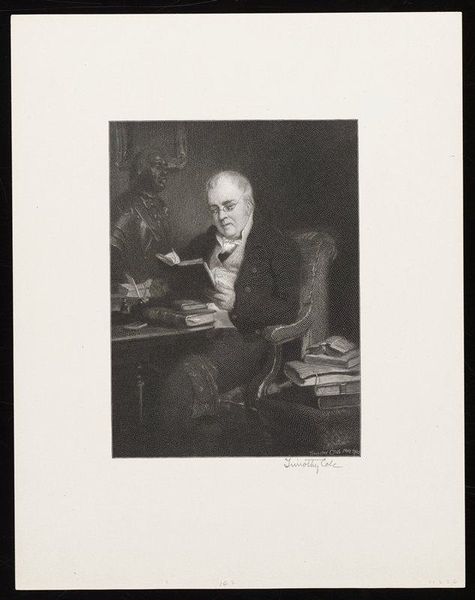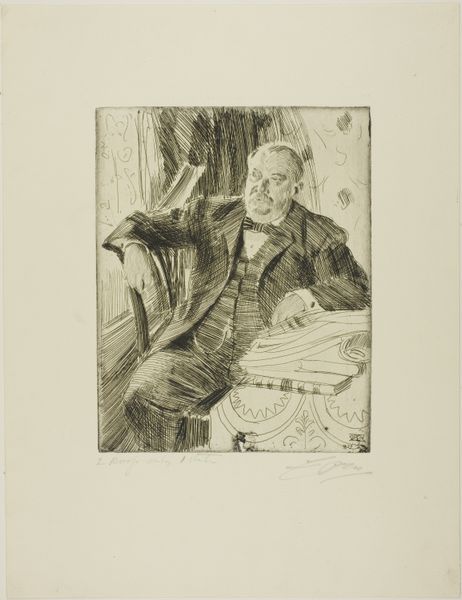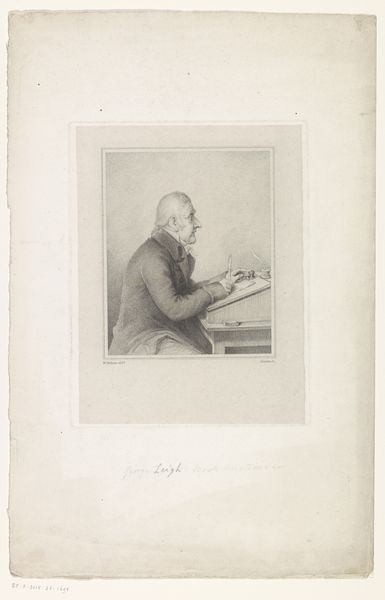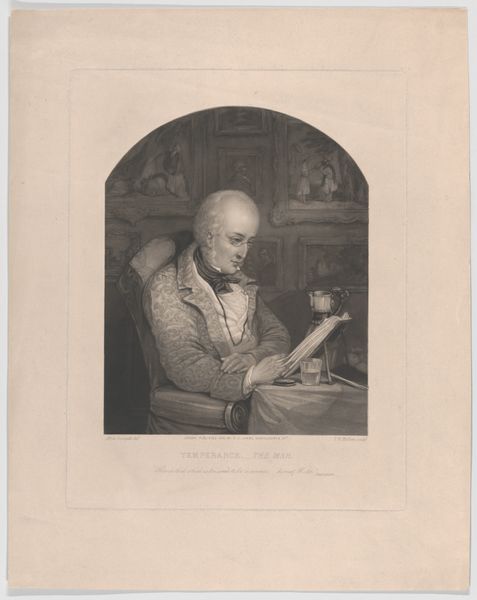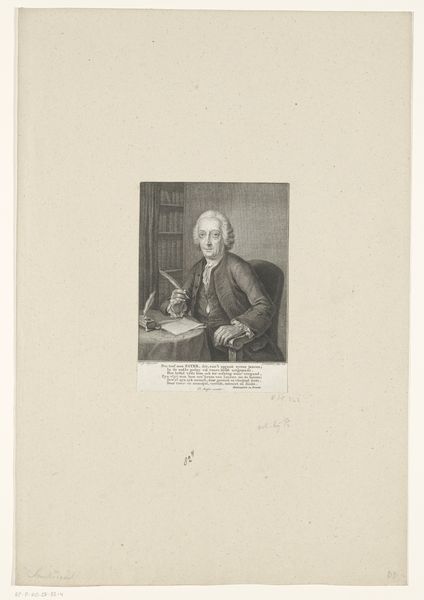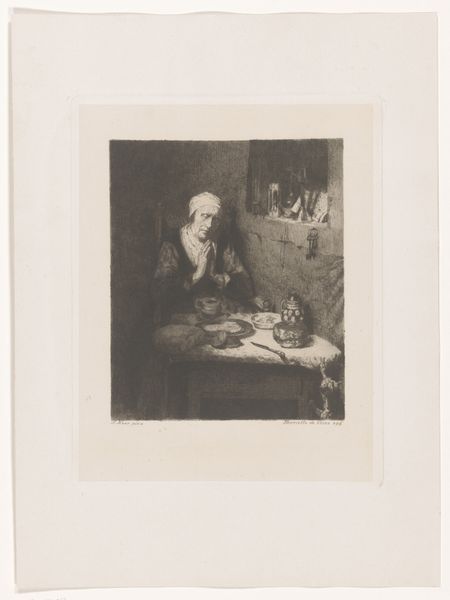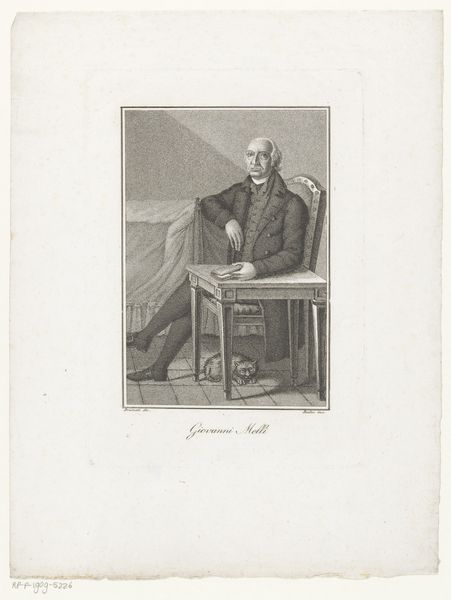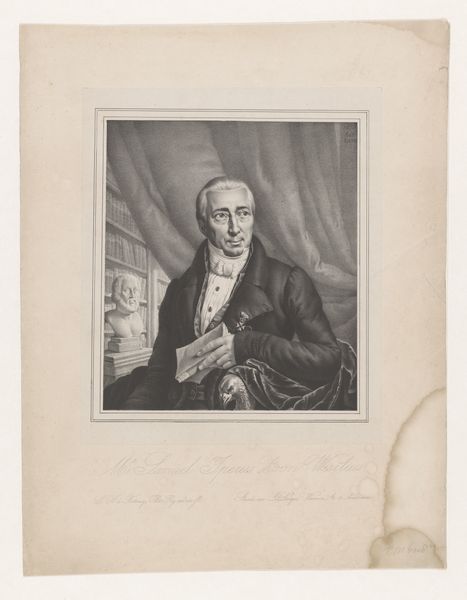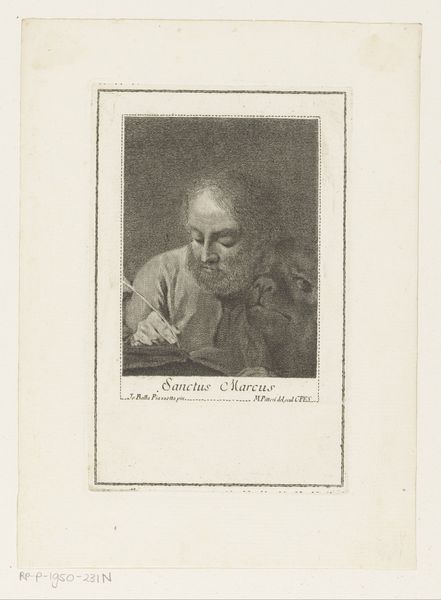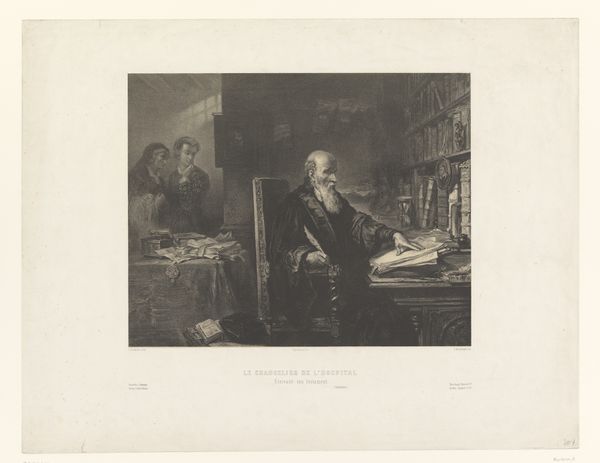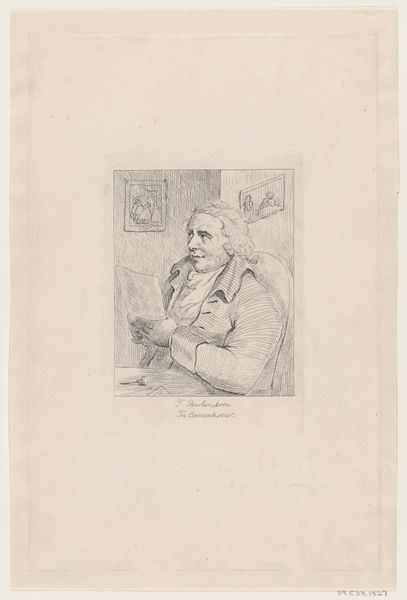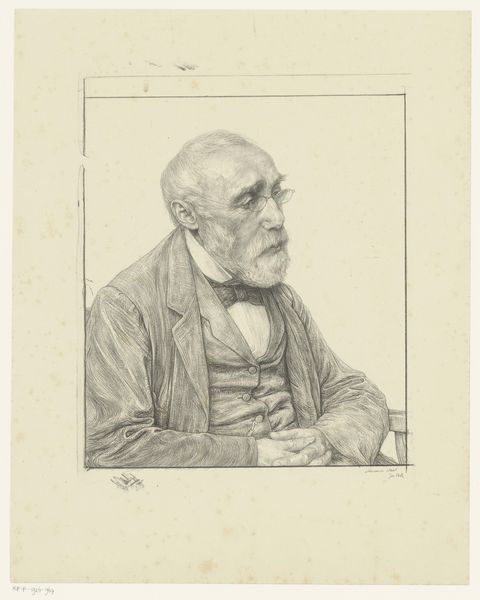
print, etching
#
portrait
# print
#
etching
#
old engraving style
#
genre-painting
#
northern-renaissance
#
realism
Dimensions: height 222 mm, width 164 mm
Copyright: Rijks Museum: Open Domain
Curator: Edouard Tyck's "Man with Open Book and Spectacles," a print likely etched sometime between 1857 and 1913, presents a portrait brimming with studious intensity. Editor: There's something quietly haunting about the density of the etching, creating an introspective atmosphere. The composition is claustrophobic but in a comforting way, filled with what seems like intellectual accumulation. Curator: The very act of reading, symbolized by the book and spectacles, becomes a gateway into memory. The man's scholarly accoutrements--the heavy book, inkwell, and quill--signal tradition and knowledge passed down. It whispers of the weighty inheritance of learning. Editor: I’m struck by the texture. Notice the delicate hatching that builds form and depth. It draws my eye around the frame and leads me to explore every shelf of books crammed on the left. What I take away most, however, is the geometry of the scene. All the volumes behind give this engraving an aura of rational precision. Curator: Indeed, the meticulous detail evokes a bygone era, one where erudition and literacy were deeply valued. There is an emphasis here, of course, on the psychological depth achieved in realism during the late nineteenth century, but with this style clearly drawing inspiration from the Northern Renaissance tradition of detailed engraving. The portrait thus suggests an echo chamber of knowledge resonating through time. Editor: Do you find his gaze melancholy, or simply reflective? To me, his glasses amplify the light on his eyes, but I detect the hint of shadow too; so there may be uncertainty, the feeling of being lost within his own study. The details almost create a labyrinth of thought, trapped by ink, paper, and intellect. Curator: Yes, the spectacles themselves act as powerful signifiers, highlighting a need for enhanced perception. Through them, we don't just see him, but we acknowledge a quest for understanding and discernment – even if partially concealed. The portrait serves as a contemplation on knowledge. Editor: It seems that through Tyck’s work we can better apprehend how the intersection of form and content produces an intriguing visual essay about an era consumed with knowledge. A simple portrait is transformed into a symbol of that hunger for information.
Comments
No comments
Be the first to comment and join the conversation on the ultimate creative platform.
